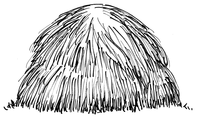Fairy Tale Teachers
Dear old and new friends,
Stories have been our teachers since prehistoric days and fairy tales were our very first teachers before preschool or kindergarten. Before they were Disneyized the old fairy tales like Three Little Pigs or Little Red Riding Hood taught critical life lessons. We can even at our present age benefit by recalling Little Red Riding Hood. But why should we? First consider a recent email from FBI director James Coney that informs you, “The FBI in conjunction with other investigation agencies and global intelligence networks has found that you have an over-due payment of ten million, three hundred thousand US dollars in Citibank. Please reply.” Secondly, in recent years Bernie Madoff pulled off the largest fraud in U.S. history of almost $65 billion scammed from his clients. Scams like these appear daily in your mail, on the telephone or at your door in thousands of different disguises. Shrink yourself down to a child student again to study this summary of Little Red Riding Hood.
The girl has no name other than of her favorite red velvet hat (in some old versions) or hooded cape that had been given to her by her grandmother. Sent by her mother with a basket of food for her sick grandmother, she was admonished, “Don’t wander off the road. Go directly through the woods on it to your grandmother.” Along the way Little Red Riding Hood meets the Wolf who entices her to enjoy wandering amongst fields of beautiful flowers alongside the road. The Wolf asks her where she is going, and she tells him…even giving him directions to her grandmother’s home. Then the Wolf says he also will visit her and departs as she continues to leisurely picks flowers. The Wolf pretends to be Little Red Riding Hood, enters the house and eats the grandmother. Little Red Riding Hood suddenly recalls the purpose of her journey and returns to the road going straight through the woods to her grandmother’s house.
Arriving she knocks on the door, and the Wolf now wearing grandmother’s nightgown and lacy cap uses a false voice telling her to come in. Using the same imitation voice, the Wolf invites her to come join him in bed, and she takes off her clothes (in the original 17th century version) and climbs into bed with the Wolf. “My, but you have long hairy arms,” says Little Red Riding hood. “All the better to embrace you dear,” replies the Wolf. This exchange continues with his long legs, big ears, eyes and finally his big teeth. Then the Wolf falls on Little Red Riding Hood and devours her.
Either Little Red Riding Hood was stupid or she wanted to be seduced! The taking off of her clothes says she is now of the age intrigued by sex. Desires for money, sex, anxieties about our health or a quest for a mate all make us easily gullible victims. Experts also tell us that we are instinctively trusting people; if the swindler’s story is plausible and compelling, we presume it is true.
Warning: In times of social instability, change and economic uncertainty such as ours today, swindlers, con artists, chiselers and hustlers abound. Our technological age is ideal for them to have access through the Internet and email to a vast range of a potential “gull” (old term for a foolish, easy deceived man, hence the term gullible). Be constantly on guard for the insincere story which is a challenge since we ourselves engage in deception. According to a study, we tell a lie on an average of three times in a 10-minute conversation on topics such as how we feel, our health, complimenting another on articles of clothing, food, etc. We know advertisements lie to us, as do politicians, so perhaps it is easier for us to be fooled by the larger dangerous lie of the con artists.
Also in anxious times of disruptive change, like those in past history we can be hoodwinked (monks beware: the term comes from having your hood pulled over your eyes) by holy hustlers whose churchy religion sells hope now and at death. Cassocked or robed hustlers usually have been swindled themselves before, so make convincing merchants of mystical mischief. In the Middle Ages monks drilled holes and inserted tubes in Blessed Mary statues to make them appear to weep so to draw pious gulls to donate sizeable sums. Real religion is the endless quest in our messy world to find the Divine. Churchly religion finds God in miracles of seeing Jesus’ face in a pizza or the Divine in supposed miraculous visitation of Mother Mary on a neighbor’s garage roof.
Beware of being spiritually greedy. Be wary of being piously blind to churchy religion that encourages judgment of others or a hatred of or aversion to sinful others, instead of embracing unconditional loving found in real religion.


 RSS Feed
RSS Feed